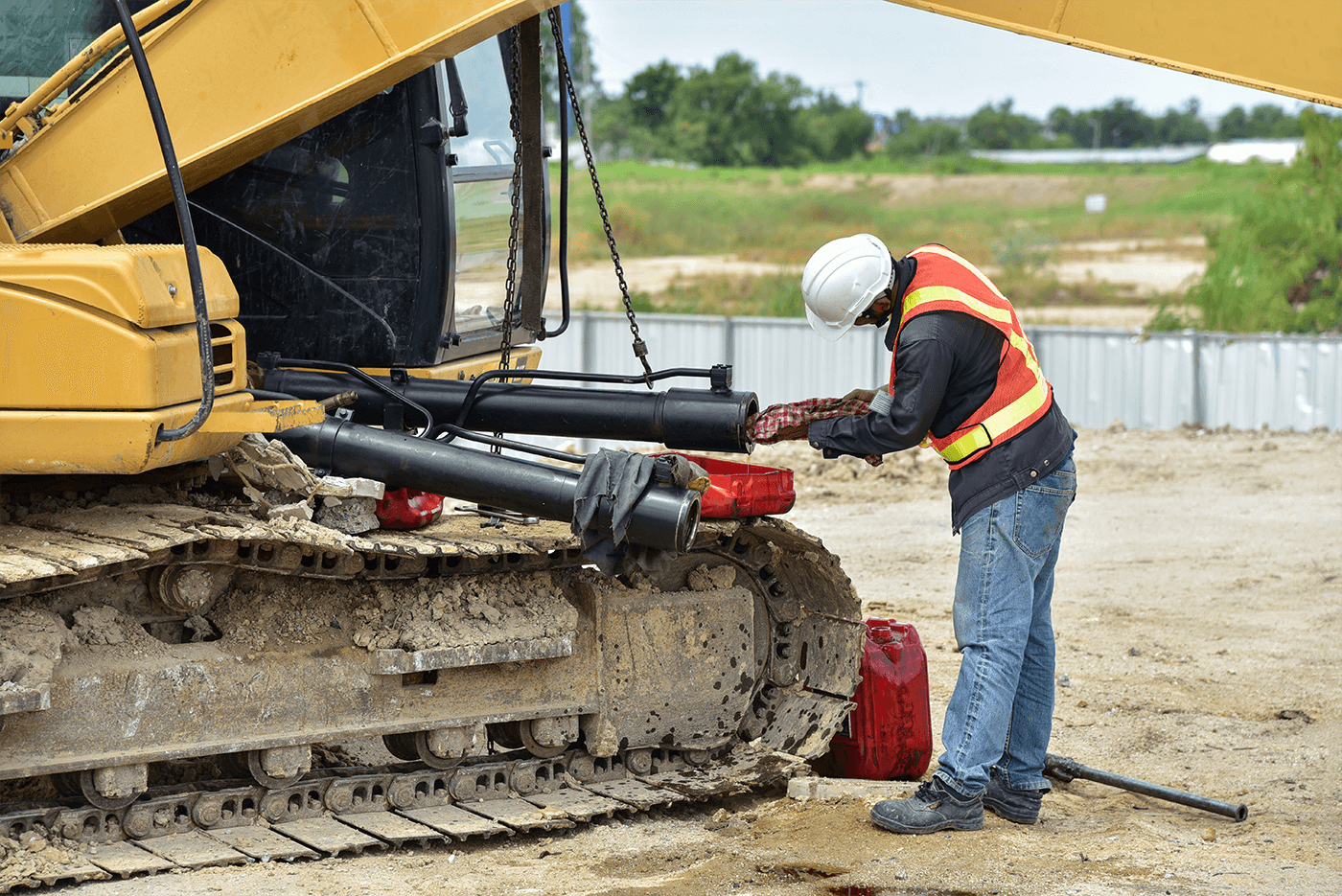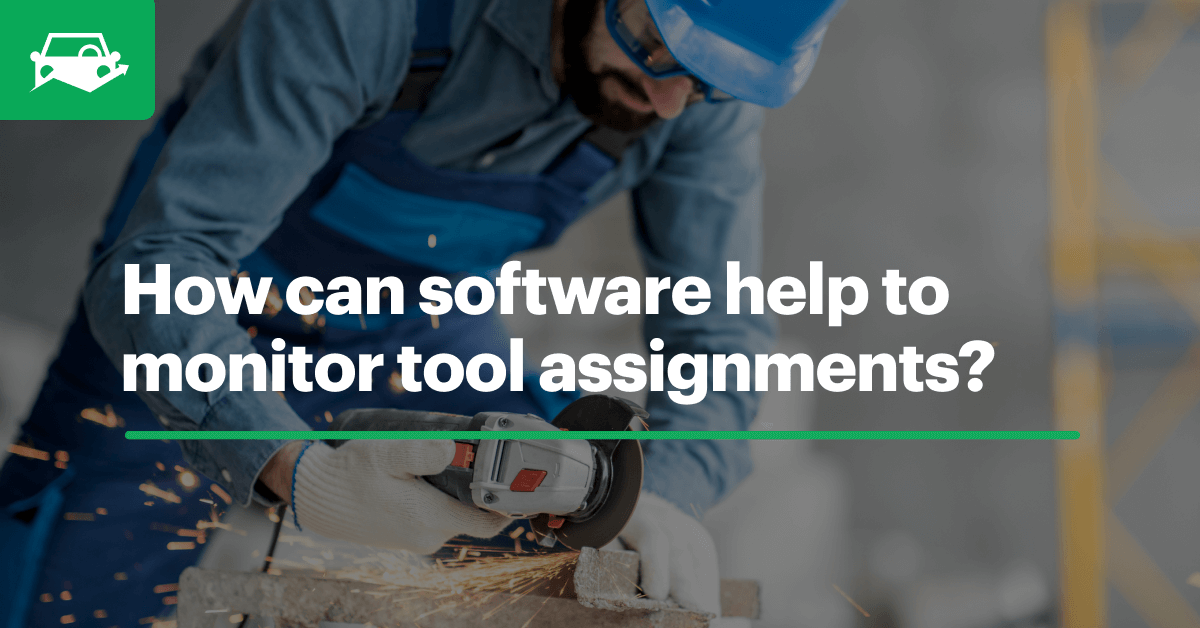As we discussed in our heavy equipment maintenance best practices blog post, having and enforcing a maintenance plan is critical. In this post, we’ll go over the benefits of proper heavy equipment maintenance and inspections.

Early detection of potential equipment issues
By conducting thorough heavy equipment inspections, your operators are ensuring that the necessary components are in working order. Malfunctions caused by manufacturer errors are sometimes unavoidable, but conducting inspections of heavy equipment on a regular basis is the best way to detect potential issues.
Some of the most important components and systems to check include:
- Oil level
- Coolant level
- Fuel
- Gauges and meters
- Tires or tracks
- Battery
Try using equipment maintenance software that will enable your operators to log inspections electronically. This will allow you to easily track your records and assign tasks for heavy equipment maintenance repairs.
Heavy equipment inspections and maintenance can limit safety issues
When focusing on daily objectives, risk management can be easily overlooked. However, being compliant with The Occupational Safety and Health Administration (OSHA) is only a partial reason for maintaining equipment and your work zone safety.
Employee safety is the premier concern for any business. Manufacturing and construction businesses are no different. After all, they are some of the most dangerous industries to work in.
Not all operators work entirely in a safe manner. Shocking, right?
That’s why proper inspections and regular heavy equipment maintenance is so important. Through routine equipment maintenance, you exponentially limit the potential for a serious accident to occur.
Prevent breakdowns and downtime
The underlying success of a manufacturing or construction business hinges on the reliability of its equipment. Undoubtedly, there are many more factors that comprise a successful operation, yet few can cripple productivity quite like equipment breakdowns.
Essentially, it becomes a trickle-down effect bottlenecking the entire chain. If your equipment isn’t functioning properly or forced out of service, then your operators are bottlenecked from completing tasks, thus lagging completion timelines and adding undesired pressure to meet deadlines. The downtime then causes delays and can even compromise your perceived reliability for future projects.
Without a plan for regularly scheduled heavy equipment inspections and maintenance, you could be setting yourself up for inevitable issues. It’s best to be proactive in your approach to equipment maintenance.
This includes having a plan for basic repairs and maintenance when certain milestones like operating hours or odometer readings pass certain levels.
Increase the lifespan of your equipment
Heavy equipment for construction projects doesn’t come cheap. Even a used Caterpillar 924K wheel loader can cost over $100,000. Similar to vehicles, once you’ve purchased equipment, the value plummets from the moment you first use it.
Those purchases need to show a return on investment, and the more use you’re able to squeeze out of equipment, the higher the rate of return will be.
Routine maintenance is the best way to increase the longevity of your heavy equipment and keep your equipment running longer and more efficiently.
Minimize the need for a replacement
Equipment costs aren’t the only potential hindrance to your operation. Time is not on your side when it comes to purchasing new equipment. It isn’t as easy as picking up a few items from the hardware store.
Instead, you have to work with a local equipment dealer or find a reliable online marketplace that sells used equipment.
Local dealers might not have the same equipment specifications as your now broken-down equipment had. That could force you to order it from a dealer that isn’t nearby, thus adding costs and time to account for delivery.
The same issues could arise when ordering used equipment, which is sourced from any number of locations. A matching piece of heavy equipment might be sourced from a different region of the country and force you to coordinate shipping, compounding downtime.
Not to mention, you’ll want to do your due diligence to ensure the used equipment is in good shape and won’t lead to future issues.
Achieve (somewhat) peace of mind
No matter how levelheaded you are, work-related stress is unavoidable. Trying to manage a worksite and a group of operators is no easy assignment. Add in the lingering concern about the health of your equipment and the burdens seem to compound.
If you haven’t developed a maintenance plan and do not utilize equipment maintenance software to assist, the gloom of potential issues should spark a sense of urgency.
Added stress worrying about your equipment is unnecessary and frankly, somewhat avoidable. At the end of the day, having peace of mind that your equipment is operating properly without fear an issue arising is nearly priceless. Risk aversion is a precious commodity and heavy equipment maintenance can be one of the most important rungs in the ladder of success for your operation.
Start your free trial of Fleetio Manage or schedule a demo to learn how you can leverage maintenance software to help your business.



